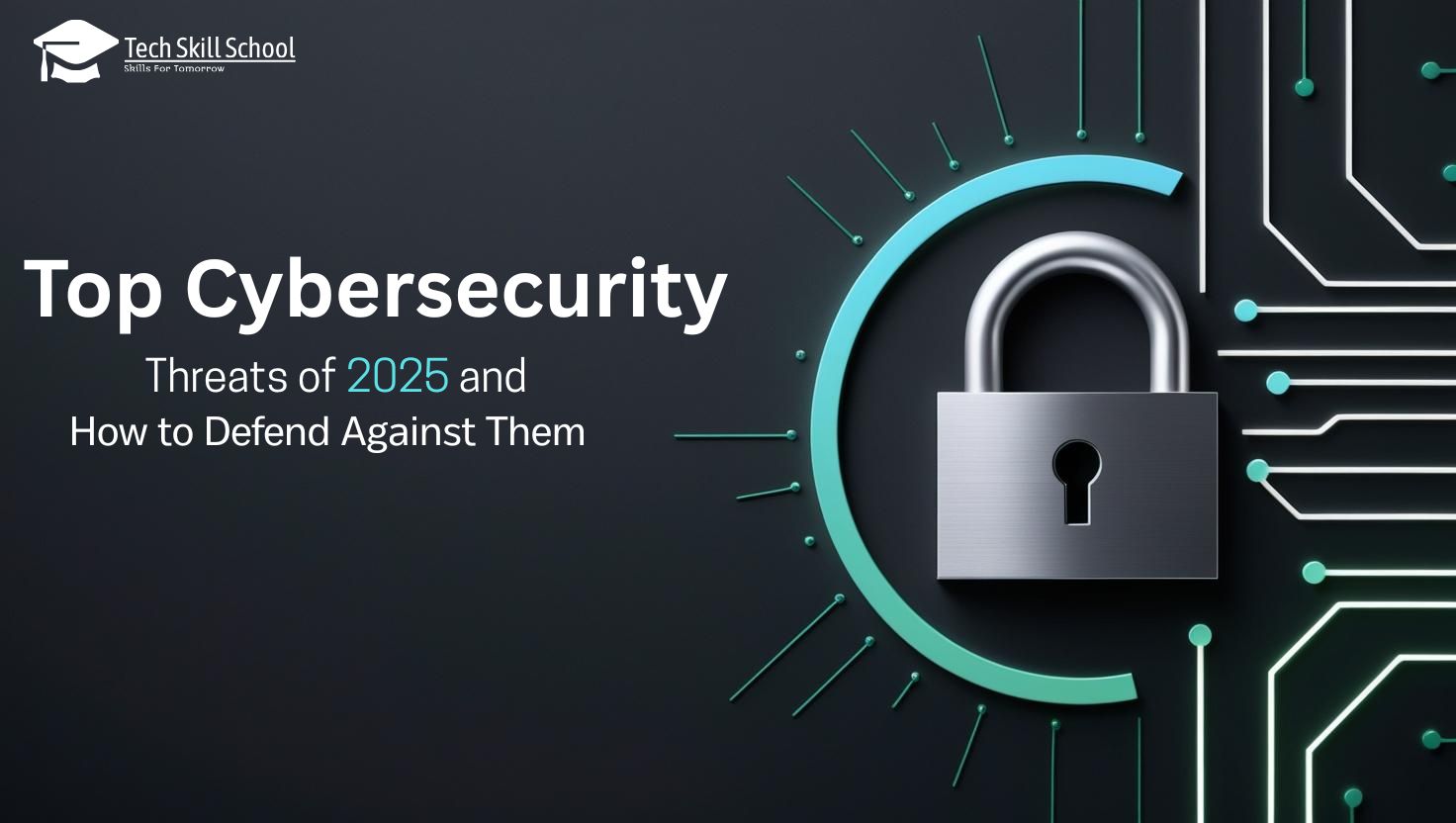Latest Cybersecurity Threats and How to Mitigate Them
 Tech Skill School
Tech Skill SchoolTable of contents
- In today’s digital world, cybersecurity is more crucial than ever. With the increasing reliance on technology, businesses and individuals are facing a surge in cyber threats. Understanding the importance of cybersecurity and how to mitigate these risks is essential for anyone looking to pursue a career in this field, whether as a cybersecurity analyst or through cybersecurity courses. Below, we explore the latest cyber threats and solutions to keep data and systems secure.
- Top Cybersecurity Threats in 2025
- AI-Driven Phishing Attacks
- Cloud Jacking
- Internet of Things (IoT) Vulnerabilities
- AI-Powered Cybercrime
- Ransomware Evolution
- Supply Chain Attacks
- Insider Threats
- Quantum Computing Threats
- Non-Human Identities (NHI) Threats
- Legacy Medical Device Vulnerabilities

In today’s digital world, cybersecurity is more crucial than ever. With the increasing reliance on technology, businesses and individuals are facing a surge in cyber threats. Understanding the importance of cybersecurity and how to mitigate these risks is essential for anyone looking to pursue a career in this field, whether as a cybersecurity analyst or through cybersecurity courses. Below, we explore the latest cyber threats and solutions to keep data and systems secure.
Top Cybersecurity Threats in 2025
AI-Driven Phishing Attacks
---> Cybercriminals are using AI to create highly convincing phishing emails and messages.
Mitigation Strategies:
Advanced AI-based email filtering systems.
Employee awareness training through cybersecurity courses.
Multi-factor authentication (MFA) enforcement.
Cloud Jacking
---> Cybercriminals hijack cloud accounts to steal data and disrupt operations.
Mitigation Strategies:
Implementing zero-trust security models.
Regular security audits and access control policies.
Strong encryption for data stored in the cloud.
Internet of Things (IoT) Vulnerabilities
---> IoT devices often have weak security, making them targets for cyberattacks.
Mitigation Strategies:
Changing default passwords on IoT devices.
Implementing network segmentation.
Regular security updates and patches.
AI-Powered Cybercrime
---> Hackers use AI to automate attacks and bypass traditional security measures.
Mitigation Strategies:
Employing AI-driven cybersecurity tools for real-time threat detection.
Behavior-based anomaly detection.
Continuous security monitoring.
Ransomware Evolution
---> Ransomware attacks are becoming more sophisticated, with hackers demanding higher ransoms.
Mitigation Strategies:
Regular backups and offline storage.
Advanced endpoint protection.
Employee training on ransomware attack prevention.
Supply Chain Attacks
---> Cybercriminals exploit vulnerabilities in third-party suppliers to infiltrate businesses.
Mitigation Strategies:
Conducting regular vendor security assessments.
Implementing strict access controls.
Monitoring supply chain networks for anomalies.
Insider Threats
---> Employees or contractors can intentionally or unintentionally cause security breaches.
Mitigation Strategies:
Conducting background checks on employees.
Implementing strict user access controls.
Continuous monitoring for suspicious activity.
Quantum Computing Threats
---> Quantum computers could potentially break current encryption standards.
Mitigation Strategies:
Researching and implementing quantum-resistant cryptography.
Investing in post-quantum encryption methods.
Keeping up with advancements in quantum computing security.
Non-Human Identities (NHI) Threats
---> Cybercriminals exploit machine identities to gain unauthorized access.
Mitigation Strategies:
Securing API and bot credentials.
Implementing strong identity and access management (IAM) policies.
Continuous monitoring of automated system behaviors.
Legacy Medical Device Vulnerabilities
---> Older medical devices often lack modern security measures, making them prime targets for attacks.
Mitigation Strategies:
Regular firmware updates and patches.
Network segmentation for medical devices.
Implementing multi-layered security protocols.
Importance of Cybersecurity in 2025
The importance of cybersecurity is evident as cyber threats continue to evolve. With rising digital transformation, organizations need skilled professionals to protect their systems. This has led to a high demand for cybersecurity jobs, including roles like cybersecurity analyst, ethical hacker, and security engineer.
Subscribe to my newsletter
Read articles from Tech Skill School directly inside your inbox. Subscribe to the newsletter, and don't miss out.
Written by
